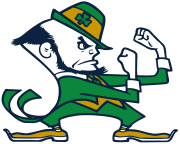(p. 12) Vandalizing the Parthenon temple in Athens has been a tenacious tradition. Most famously, Lord Elgin appropriated the “Elgin marbles” in 1801-5. But that was hardly the first example. In the Byzantine era, when the temple had been turned into a church, two bishops — Marinos and Theodosios — carved their names on its monumental columns. The Ottomans used the Parthenon as a gunpowder magazine, hence its pockmarked masonry — the result of an attack by Venetian forces in the 17th century. Now Catherine Nixey, a classics teacher turned writer and journalist, takes us back to earlier desecrations, the destruction of the premier artworks of antiquity by Christian zealots (from the Greek zelos — ardor, eager rivalry) in what she calls “The Darkening Age.”
. . .
Debate — philosophically and physiologically — makes us human, whereas dogma cauterizes our potential as a species. Through the sharing of new ideas the ancients identified the atom, measured the circumference of the earth, grasped the environmental benefits of vegetarianism.
To be sure, Christians would not have a monopoly on orthodoxy, or indeed on suppression: The history of the ancient world typically makes for stomach-churning reading. Pagan philosophers too who flew in the face of religious consensus risked persecution; Socrates, we must not forget, was condemned to death on a religious charge.
But Christians did fetishize dogma. In A.D. 386 a law was passed declaring that those “who contend about religion … shall pay with their lives and blood.” Books were systematically burned.
. . .
. . . she opens her book with a potent description of black-robed zealots from 16 centuries ago taking iron bars to the beautiful statue of Athena in the sanctuary of Palmyra, located in modern-day Syria. Intellectuals in Antioch (in ancient Syria) were tortured and beheaded, as were the statues around them.
. . .
Nixey closes her book with the description of another Athena, in the city of her name, being decapitated around A.D. 529, her defiled body used as a steppingstone into what was once a world-renowned school of philosophy. Athena was the deity of wisdom. The words “wisdom” and “historian” have a common ancestor, a proto-Indo-European word meaning to see things clearly. Nixey delivers this ballista-bolt of a book with her eyes wide open and in an attempt to bring light as well as heat to the sad story of intellectual monoculture and religious intolerance. Her sympathy, corruscatingly, compellingly, is with the Roman orator Symmachus: “We see the same stars, the sky is shared by all, the same world surrounds us. What does it matter what wisdom a person uses to seek for the truth?”
For the full review, see:
Bettany Hughes. “‘How the Ancient World Was Destroyed.” The New York Times Book Review (Sunday, June 10, 2018): 12.
(Note: ellipses between, and at the start of, paragraphs, added; ellipsis internal to paragraph, in original.)
(Note: the online version of the review has the date June 8, 2018, and has the title “How Christians Destroyed the Ancient World.”)
The book under review, is:
Nixey, Catherine. The Darkening Age: The Christian Destruction of the Classical World. Boston: Houghton Mifflin Harcourt, 2018.


